
Greater amberjack is clearly the most targeted of the jack species in the Gulf. Mature greater amberjack are easy to discern from the others simply because they grow much larger than their jack family members. The tricky part is differentiating jack species when they’re small and let’s be honest, it’s not easy, even for the most seasoned fishermen. Since greater amberjacks are subject to a minimum size limit and seasonal closures, lesser amberjack and banded rudder fish are subject to a slot limit, and almaco jacks aren’t subject to any size or season limit, this guide should help ensure you don’t accidentally boat an illegal fish or, you don’t accidentally miss out on a keeper fish.
Greater amberjack:
Greater amberjack certainly grow much larger than the other jacks. But if you happen upon a small one, there are two ways to tell it apart from the other jacks. First, the dark eye stripe that starts at the dorsal fin runs all the way through the eye and extends to the snout of a greater amberjack. But, since coloration isn’t always the most reliable way to identify a fish, double check the upper jaw. In a greater amberjack, the upper jaw bone curves up towards the eye and the first dorsal fin of a greater amberjack has 7 spines.
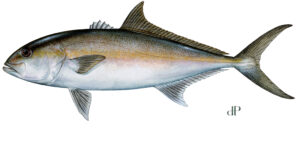
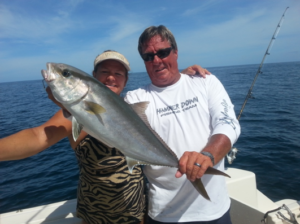
Top: Diane Roam Peebles Bottom: Mike Boyer
Lesser amberjack:
Lesser amberjack don’t get nearly as big as greater amberjack, and tend to max out at about 10 pounds. Their dark stripe stops at the eye, and compared to their body size, their eyes are proportionally much larger than those of a greater amberjack. Finally, their upper jawbone is a straight line that remains horizontal and they have 8 spines on their first dorsal fin.

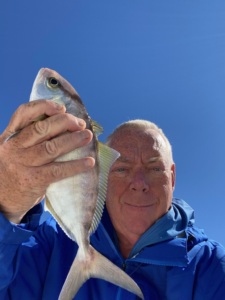
Top: Diane Roam Peebles Bottom: Gregg Lewis
Banded rudderfish:
Banded rudderfish are not as common in the northern Gulf but can be found off Florida. They aren’t usually as darkly colored as greater and lesser amberjack nor do they have the dark eye stripe. Instead, they tend to have a bluish sheen and white tips on the end of their tail and on the first dorsal have 8 spines.
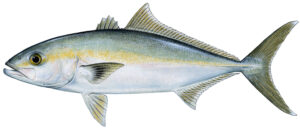
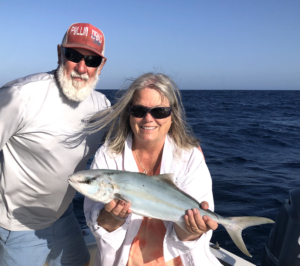
Top: Diane Roam Peebles Bottom: Crystal Samuel
Almaco Jack:
Almaco jack do have the dark eye stripe but they’re much rounder from belly to back than their cousins. Their most distinguishing feature is the length of the dorsal rays on their second dorsal fin which can be more than double the length of the rest of the dorsal fin. They have 7 spines on their first dorsal fin.
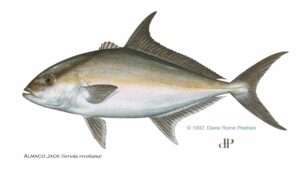

Top: Diane Roam Peebles Bottom: FWC
This guide developed by the Mississippi-Alabama Sea Grant Consortium (MASGP-22-038) and Mississippi State University Extension Service (3852). highlighting the differences between the jacks should help:
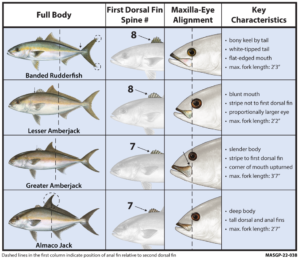
Also, check out this comprehensive identification resource for a deeper understanding of differences between the different jacks and a synopsis of the current Greater Amberjack Research Program that is underway: https://gulfseagrant.org/reef-fish-extension/greater-amberjack-research-program/
Knowing how to identify the jacks will help ensure that you don’t cheat yourself out of an extra fish. It’ll also help you avoid accidentally harvesting a prohibited or improperly sized fish. Now that you can tell them apart, find detailed commercial and recreational regulations on our fishing regulations webpage or on the recreational or commercial version of the Fish Rules Mobile App.
